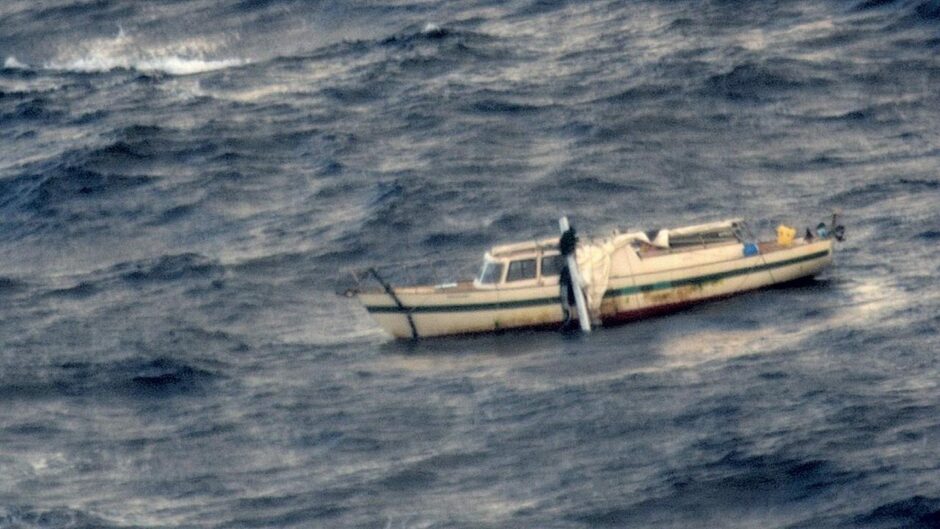This is the dramatic moment RAF crews dropped emergency equipment into the water to help a stricken sailor battling 19ft waves.
RAF Lossiemouth’s Poseidon team were scrambled to assist the yacht, which lost its mast in the stormy Atlantic.
Together with a crew aboard an Atlas A400M from RAF Brize Norton, the Poseidon P-8 team helped locate the yacht 700 nautical miles west of Ireland on Saturday.
The Atlas dropped life rafts into the water near the ship while the Poseidon created a communications uplink with the sailor to help direct a rescue ship to the location.
The next day, the experienced American sailor was picked up by a motor tanker, Amax Antham – after four unsuccessful attempts by a merchant vessel overnight.
‘Huge relief’
There are nine submarine-hunting P-8 Poseidons at RAF Lossiemouth, which are tasked with keeping a watchful eye on the North Atlantic.
Wing Commander Ben Livesey, OC CXX Sqn, P8 Poseidon said the incident highlights the importance of the team’s work.
He said: “The power of the weather once again highlighted the importance of a meaningful search and rescue capability.
“Cooperative events such as these demonstrate the way crews from across the RAF can work together to deliver great effect.
“It was great to see Team Lossiemouth rising to the occasion and responding rapidly and professionally at very short notice.
“As a result, our efforts helped save a life; we all remain immensely proud of the contribution we make to keeping this nation and its people safe.”
A Poseidon P-8 from @RAFLossiemouth & an Atlas A400 from @RAFBrizeNorton undertook a rescue mission of a sailor in distress in the Atlantic. This video documents that mission. #NoOrdinaryJob pic.twitter.com/oNB8K8Ma2A
— Royal Air Force (@RoyalAirForce) October 17, 2022
The Poseidon and Atlas crews worked closely to confirm the location of the yacht and drop rescue equipment to the sailor, knowing they only had “one chance” to get it right.
Flight Lieutenant Mainwaring, of Brize Norton, said: “There was a huge relief when we confirmed the location of the yacht.
“There was a sense of purpose as we prepared to release the rescue equipment because you only get one chance to get it right.
“Seeing the yachtsman recover the equipment we dropped was brilliant.”
The dramatic rescue comes just two months after the Poseidon P-8 completed it’s first-ever search and rescue mission in August.
The aircraft was used to help two rowers adrift in the Atlantic Ocean.
‘Complex’ operation
Rob Priestley, commander of the coastguard’s Joint Rescue Coordination Centre, said: “This was a lengthy and complex search and rescue mission coordinated by the JRCC. We’d like to pay tribute to the excellent seamanship and skill of the crew of the Amax Anthem and the Patricia V and to thank other vessels for responding – this was a challenging rescue in difficult conditions.
“The involvement of the RAF aircraft was also a crucial element of this operation. Because the sailor was carrying two emergency position indicating beacons (EPIRBS) we were able to inform the RAF where the vessel would be. The signals from the EPIRBs were the only means we had of knowing where the sailor was and that he was in distress. All other communications methods had been destroyed during the event that led to his dismasting.
“One of the most important elements of this incident was the two EPIRBs. Without these we would not have known that the sailor was in difficulty, let alone where he was. I’d really encourage anyone who sets to sea to carry an EPIRB and to register it with their national authority – in the UK that is HM Coastguard. An up to date registration means we have additional information to help with any rescue that’s required.”

Conversation